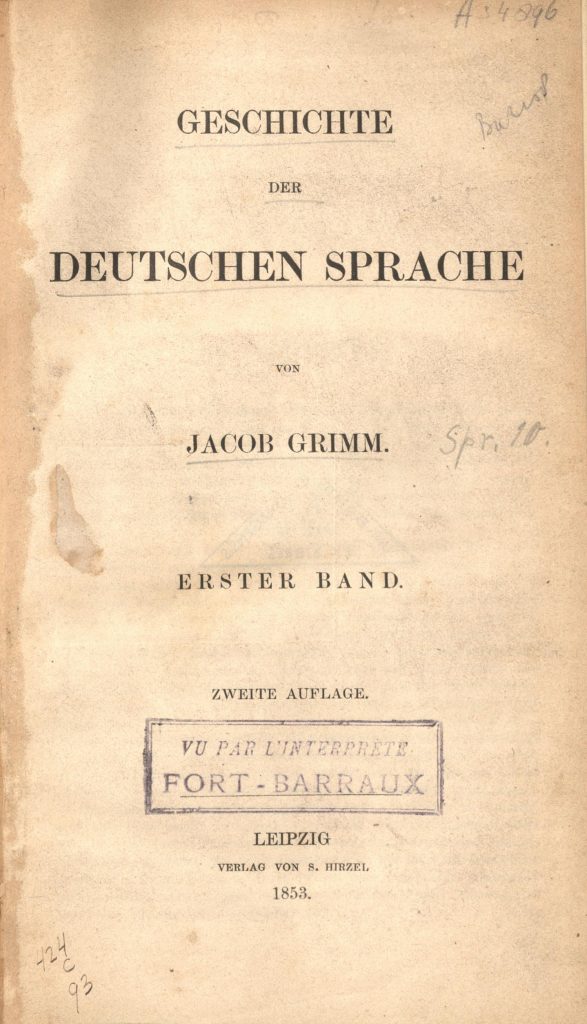Path 2
Nation Building
Collecting Stories
D
uring the lifetime of the Grimm brothers, there was no unified German state. There were around 200 German principalities that were often at war, dealing with tyrannical leaders, and torn apart by ongoing conflicts between the Protestant Church and the Catholic Church. The Grimm brothers wished for a more stable political context, and for a unified Germany, like France or England at the time. They especially wished for the defeat of Napoleonic occupiers.
In that context, they took on the task of collecting stories. While the brothers focused on stories that were of Germanic origin, they never outright called them “German” fairy tales. In fact, the more they collected, the more the brothers saw the stories as the product of a larger European oral tradition. Among the friends they made in Savigny’s circle were two Romantic poets and novelists, Clemens von Brentano and Achim von Arnim, who had collected folk poems and songs for their book The Boy’s Wonder Horn (1805). It was for them that the Brothers Grimm started to collect oral tales, interviewing friends and acquaintances in and around Kassel, as well as collecting stories from old books.
Collecting Stories and National Identities
S
torytelling has always been an essential part of the human experience. The stories we tell carry the values we as a society wish to perpetuate. The Grimm brothers called their collection of tales an “educational primer” (Erziehungsbuch). They intended for the tales to grasp essential cultural codes, motifs, and rules that encapsulated and reinforced the idea of a German culture. Once they published the first edition of the Märchenschatz in 1812, it started a wave of story collecting in Europe that went far beyond Giambattista Basile and Charles Perrault, whose storytelling was aimed mostly at upper-class audiences. In the tradition of the Brothers Grimm, Sicilian folklorist Giuseppe Pitrè sought the essence of the Sicilian spirit in the tales told by the working classes. In France, François-Marie Luzel did similar work with the folklore of the Armorican Bretons. Jean François Bladé collected stories in the Gascogne region, Paul Sébillot collected in Brittany, and Henry Carnoy collected in the Lille Region, as well as in Algeria. Alexander Afansév in Russia, Karel Erben in Czechoslovakia, and Peter Christen Asbjørnsen and Jørgen Engebretsen Moe in Norway collected folklore from those regions as well.
Collecting fairy tales became an exercise in affirming identities, whether they were singular or shared.
European Legacy
I
f the Brothers’ Grimm collection of fairy tales helped to lay the mythic groundwork for German cultural unification, the stories also have a wider European legacy. Fairy tales create a sense of universal community through the reinforcement of shared values, norms, and rules, for example, that we are all striving to achieve certain dreams or wishes, or that certain types of behaviour will inevitably lead to certain results, like living happily ever after in a castle with Prince Charming. This has proven particularly true for fairy tales across Europe, where the same stories have travelled and shifted slightly as they did. A tale might have local variations but its overarching narrative, and the rules it imparts, remains the same from one region to the next.
The stories collected by the Brothers Grimm first crossed to the English-speaking world when the brothers decided, under the influence of friend and lawyer Edgar Taylor, that their stories did in fact hold an appeal for children, and could even be educational. With Taylor’s help publishing in England, the first illustrated edition of Grimm’s Fairy Tales was a huge success. Afterwards, the Brothers Grimm began to adapt some of their publications to the children’s book market with smaller and more illustrated editions. The Brothers were nevertheless extremely cautious about retaining the moral and instructive purposes of these stories. They were wary of the danger of infantilization, both of the story and of the reader, if the images were too comical. Illustrations were meant to reach both adult and child reader alike, and to impart life lessons among the layers of fantasy.
More about...

Dorothea Viehmann - German storyteller

How fairy tales reflect the legal culture of the time of the Grimm brothers

Brothers Grimm's biggest achievement regarding their philological work







